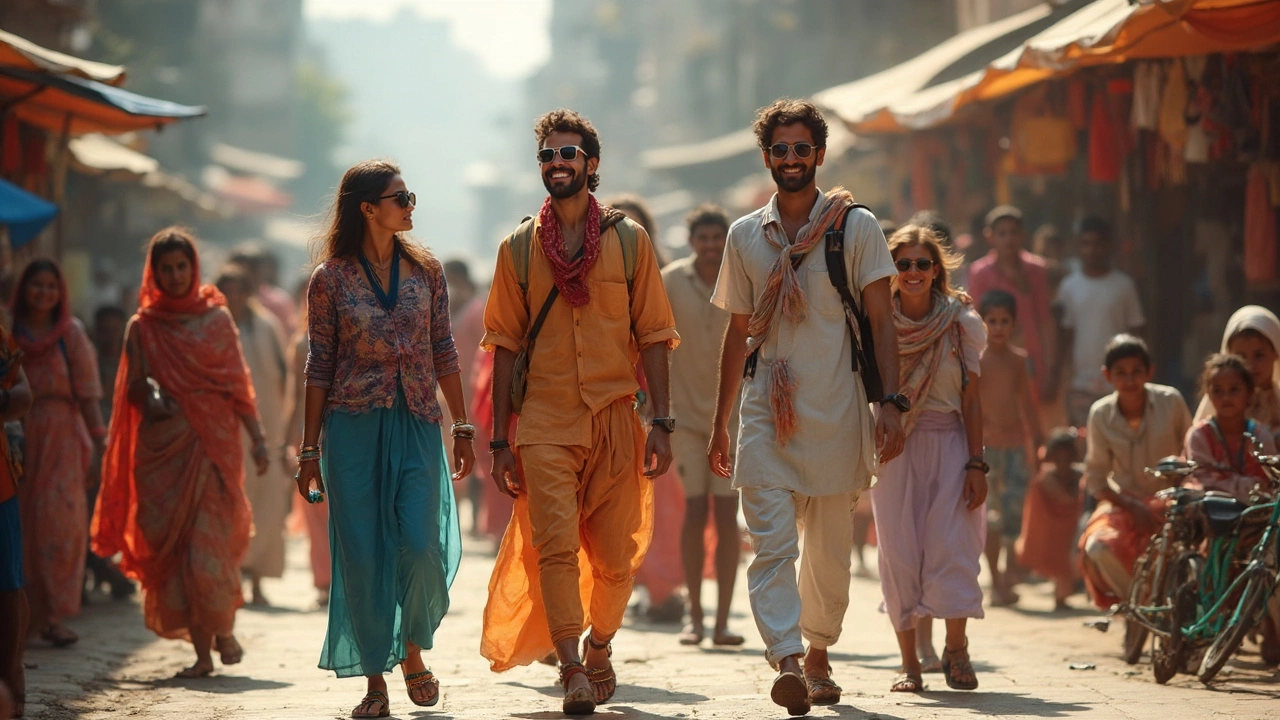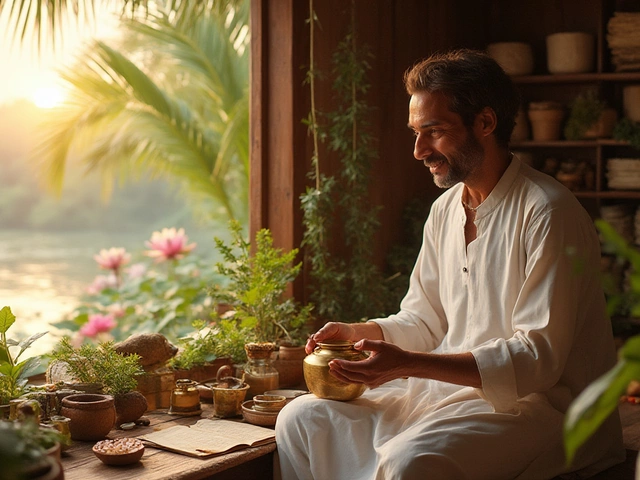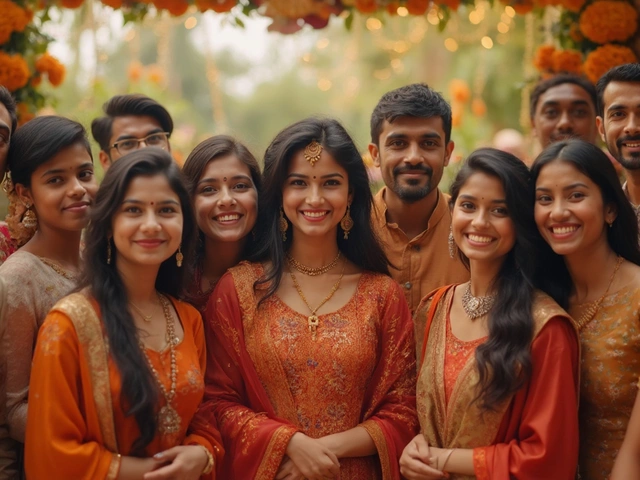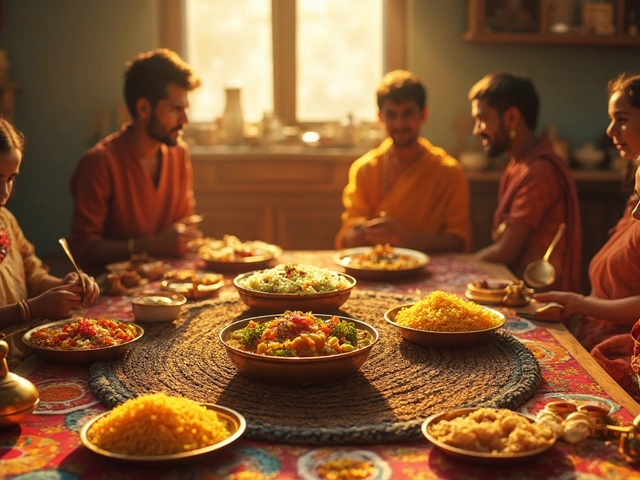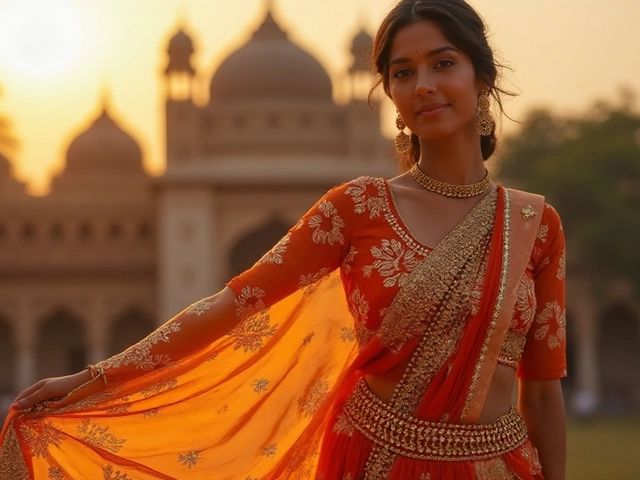Step off the plane in India and you’ll notice one thing right away: people actually pay attention to what you’re wearing. Not in a judgmental way, but it’s just a country where dress sends a message—whether you’re in the middle of Delhi or hiking in the Western Ghats. Nobody’s going to fine you for wearing shorts, but heads might turn, and sometimes you’ll wish you’d thrown on something a little different.
If you want to feel comfortable and just enjoy your trip (without sticking out at every temple or market), how you dress can make a huge difference. There’s no strict rulebook, but there are a ton of little things that people talk about on travel forums or learn the hard way. You’ll see some people go full-designer sari, others stick to their usual jeans, and plenty in between. So what actually works?
- Why Dressing Matters in India
- What Most Foreigners Actually Wear
- Choosing Indian Clothes: Yes or No?
- Handling Weather and Comfort
- Big Dress Code Mistakes Foreigners Make
- Tips to Blend In Without Stress
Why Dressing Matters in India
Here’s the deal: in India, what you wear doesn’t just keep you comfy—it can shape how locals treat you. There’s a wide gap between what’s normal in the West and what feels right on the busy streets of Jaipur or Mumbai. People here notice clothes, especially on foreigners, and it can affect the kind of attention you get. Indians tend to dress more conservatively, and public modesty is just built into the culture, especially away from the tourist hotspots.
If you end up at a temple or a historical monument, you’ll often see signs or hear staff ask visitors to cover arms and legs. Some restaurants and upscale hotels also have dress codes—nothing extreme, but they’ll expect more than flip-flops and beachwear. Even in a bustling city, people usually avoid things like tank tops or shorts unless they’re at the gym or a really tourist-heavy area like Goa’s beaches. It’s not about strict rules, but it’s about respect and fitting in.
Check this out—wearing the right traditional clothing can actually open doors. Local markets and smaller towns are way more welcoming when visitors make an effort to blend in. People relax, prices sometimes get more fair, and you’re less likely to be hassled by touts. In fact, blending in a bit for safety and comfort is advice echoed by experienced travelers and expats in India.
Here’s a quick overview of how different types of dress are seen in common places:
| Place | Expected Dress Code |
|---|---|
| Temples/Gurdwaras | Cover shoulders & legs, remove shoes |
| Local Markets | Modest, loose-fitting clothes |
| Tourist Hotspots | More relaxed, but still modest |
| Hotels/Restaurants | Smart casual, no beachwear |
Wearing something considered too revealing can draw stares, make you stick out, and sometimes even get you denied entry. All this isn’t about restricting fun—it’s about understanding how things tick in India and making your trip smoother. Think of your clothes as a tool: use them to travel hassle-free and connect with people wherever you go.
What Most Foreigners Actually Wear
Walk down any busy street in Goa or stand in line at the Taj Mahal, and you’ll quickly spot what foreigners really wear in India. There’s no single answer, but there are definitely patterns. Most stick with familiar Western clothes, just making small tweaks based on comfort and local expectations.
For daily sightseeing, you’ll usually see:
- Loose cotton shirts – Breathable, keep the sweat at bay, and don’t cling
- Trousers, jeans, or long skirts – Men and women both tend to avoid shorts, especially in cities or traditional areas.
- Comfortable sneakers or sandals – Sidewalks aren’t always friendly for dress shoes or flip-flops.
- Scarves or shawls – Not just a style thing; having a scarf means you’re ready for a temple visit or to cover up quickly.
Beach spots like Goa are a different story: shorts, tank tops, and sundresses appear all the time. Still, once you’re off the sand and into a town or restaurant, most foreigners throw on something with more coverage.
Among younger travelers and backpackers, you’ll also notice a lot of loose Indian-style pants and simple kurta tops picked up from local markets—they’re cheap, cool, and help you blend in just enough. If you’re visiting in winter (yes, it gets cold in India!), foreigners pile on hoodies and jackets, especially in North India.
| Region | Popular Wear |
|---|---|
| North India (Delhi, Agra) | Loose long pants, layerable t-shirts, light jackets |
| South India (Kerala, Tamil Nadu) | Cotton shirts, maxi skirts, breathable linen pants |
| Goa Beaches | Beachwear, shorts, sundresses; cover-ups outside beach |
One easy rule: the more rural or conservative the place, the less skin you show—men and women both. In cities with a lot of tourists, expectations are more relaxed, but you’ll still see most folks keeping their shoulders and knees covered. Blending a little local style into your basics is common and makes daily life a bit smoother.
Choosing Indian Clothes: Yes or No?
The first time you spot a foreigner in a crisp kurta or a flowy saree in India, you’ll probably wonder: is it a good idea to go local or stick to what you know? Here’s the deal—there’s no rule saying foreigners have to wear traditional Indian clothing, but local outfits do have their perks. For one, they’re built for the sun and humidity, and they’ll save you from unwanted attention at religious sites.
If you’re thinking about trying Indian clothes, kurtas, salwar kameez, and churidars for both men and women are a win. They’re cheap, available on every street corner, and honestly—they’re more comfortable than jeans when it’s 40°C outside. Major tourist spots and even smaller cities have shops like Fabindia or local markets where you can grab quality stuff, and nobody expects you to know how to tie a saree perfectly on your first shot.
- Temples and holy places? Wearing Indian clothes is a smart move. It’s all about respect, and you’ll blend in more.
- Casual city strolls or beach time in Goa? Local styles are comfortable, but Western clothes are fine too. Just keep it modest—tank tops and short shorts usually get you stares, not compliments.
- Fancy event or wedding invite? Indian outfits make photos epic and you’ll get instant approval from locals.
About 70% of foreigners coming for more than two weeks end up buying at least one Indian outfit, according to a survey from a national tourism board in 2023. When it comes to work trips or volunteering, more than half switch to Indian clothes after arriving. Why? Comfort and fitting in. Here’s a quick look at the most popular picks:
| Clothing | Why Foreigners Choose It |
|---|---|
| Kurta + Leggings | Breezy, lightweight, hides sweat marks |
| Salwar Kameez | Affordable, easy to move in, looks smart |
| Dupatta/Shawl | Versatile, handy for covering shoulders/head at temples |
| Pathani Suit (Men) | Zero fuss, looks sharp in photos |
So, should you go local? For most travelers, grabbing at least one traditional Indian clothing set is worth it—if nothing else, it’s a killer conversation starter back home. If you’re not into it, no worries. Just stay comfortable, avoid anything too revealing, and roll with whatever makes you feel at ease.
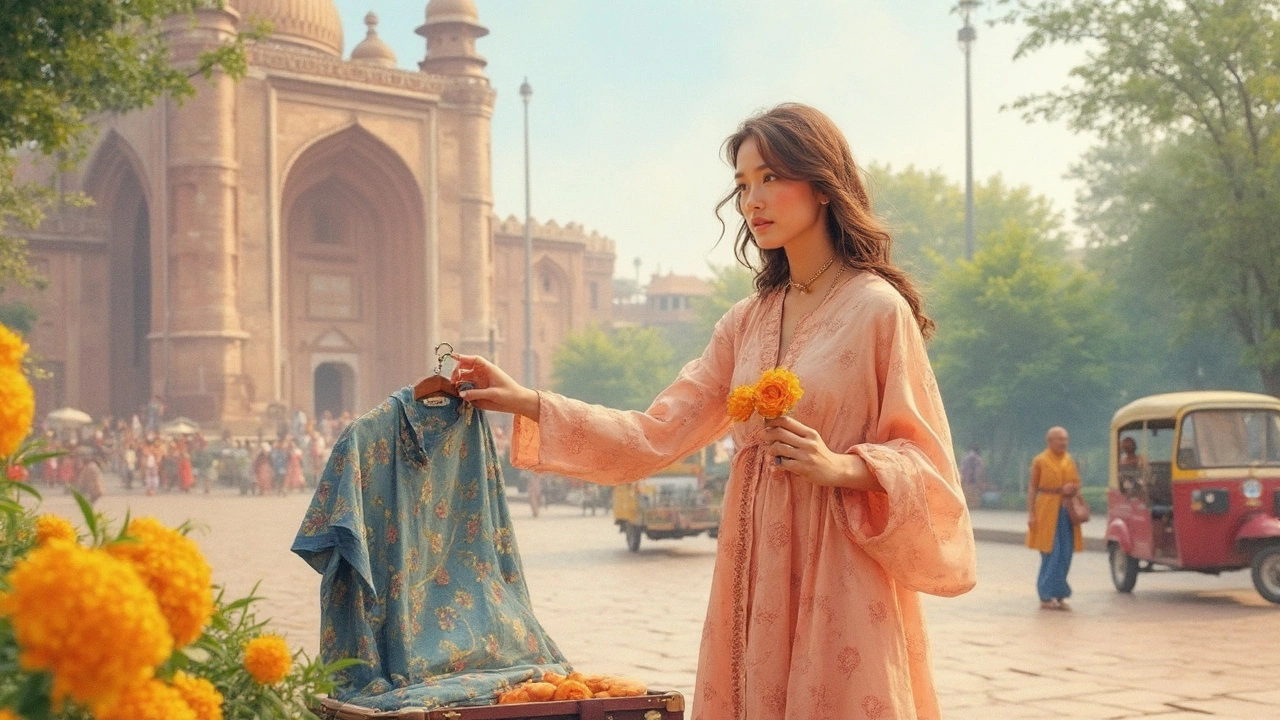
Handling Weather and Comfort
India throws every climate at you—blazing heat, bone-soaking monsoon, sticky humidity, and even chilly mountain air if you’re headed north. Packing the wrong stuff isn’t just a rookie mistake; it can ruin your day. Here’s where most foreigners trip up: either think it’s hot everywhere all the time, or try dressing for fashion tips from Instagram, which totally ignores the practical stuff locals do.
During the wild summers, loose cotton or linen clothes are king. Think flowy pants, long skirts, comfy kurtas (they look great and feel like wearing pajamas in public). Synthetic fabrics turn unbearable once you start sweating—so give them a pass. For women, a simple scarf or dupatta is a lifesaver for sun, dust, or sudden temple visits. Men, you’re safe sticking with breathable trousers and light shirts. Shorts and tank tops? Depends where you are. In Goa, nobody cares. In Agra or Varanasi, you’ll get stares and sunburn.
Humidity blankets big cities like Mumbai and Chennai for half the year. Clothes cling, you can never have enough clean shirts, and laundry just won’t dry. Two solid tips: go loose, and pack more changes than you think you’ll need. Quick-dry underwear is a small trick that saves a ton of hassle.
The monsoon flips everything upside down. Downpours can show up out of nowhere, streets flood, and drying off takes forever. Locals just roll up their pants and wear sandals or cheap rubber flip-flops—way better than soggy sneakers. Waterproof bags and a super-light raincoat can be a gamechanger.
| Region | Month | Clothing Tip |
|---|---|---|
| Delhi/North India | December-February | Layer up—light jackets, shawls |
| Mumbai/South India | June-September | Pack for monsoon—sandals, raincoat |
| Goa | November-March | Beachwear is fine—shorts, tees |
| Himalayas | Year-round | Bring warm clothes, even summer nights |
Travelers forget just how much time is spent moving around—on trains, buses, standing in lines. Pick shoes you can slip on and off—lots of places ask you to remove them before entering. And always bring sunblock, because the sun feels way harsher, even when it’s cloudy out.
If you want real comfort, think like a local traveler. Go light, layer up, and keep it simple. That way, you’ll spend less time sweating or shivering—and more time loving where you are.
Big Dress Code Mistakes Foreigners Make
Every year, tons of foreigners show up in India wearing exactly what no guidebook recommends. You’d be surprised how many travelers get it wrong, often just because they packed the wrong stuff or didn’t realize that India’s not as casual as some other countries. Let’s break down the big mistakes people make with clothes in India.
- Shorts and Skimpy Outfits in the Wrong Places: Yes, it’s hot, but rocking tank tops, short skirts, or very tight leggings can grab the wrong kind of attention, especially in smaller cities and outside tourist hotspots. Locals may not comment, but you’ll see more stares and maybe less helpful treatment.
- Ignoring Temple Dress Codes: India’s temples are big on visitors covering shoulders and knees—it's not just a suggestion, it’s enforced. You don’t want to be turned away after traveling hours to see something spectacular. Carrying a scarf or shawl goes a long way.
- Wearing Shoes Where You Shouldn’t: This one catches lots of people off guard. At temples, homes, and sometimes even shops, footwear is a no-go. Missing the “shoes off” spot at an entrance makes you look clueless, fast.
- Going Too Traditional, Too Literally: Some foreigners go all-in with heavy sarees or kurtas, thinking it’ll help them blend in. It usually has the opposite effect. Not only is it hard to wear if you’re not used to it, but it screams “tourist in costume” unless you’re at a wedding or festival.
- Logos and Offensive Prints: T-shirts with bold slogans or religious symbols (that aren’t Indian) can get you awkward looks or worse. Some imagery—like sacred animals or gods—on clothing may even offend locals if handled carelessly.
Here’s a quick glance at what foreigners often get wrong and how it can backfire:
| Mistake | What Happens |
|---|---|
| Short shorts in rural areas | Stares, less respect |
| Visible tattoos of local religious symbols | Might offend older locals |
| Not covering head in temples | Entry refused |
Honestly, you don’t have to dress in a way that makes you uncomfortable, but being just a little more covered and a lot more conscious will save you a ton of hassle. It shows respect, and it makes your time in India way smoother.
Tips to Blend In Without Stress
Worried about standing out as a tourist in India? Don’t be. Most locals are used to seeing foreigners, but if your clothes make you look loud or clueless, people notice. Want to avoid weird looks and have smoother interactions? Here’s what actually helps:
- Cover your knees and shoulders. You’ll rarely see local men in shorts or tank tops, and women almost never do, even in the heat. Light cotton pants and a t-shirt works wonders for both men and women. This simple tip keeps you in the safe zone almost everywhere.
- Take cues from locals. Look at what people your age are wearing in markets, restaurants, and public spaces. Ultrapopular Indian brands like FabIndia and Westside sell western-style clothes cut for the climate—easy way to dress like a local without trying too hard.
- Try Indian clothes, but skip the costume look. For women, buying a few kurtis (long tunics) and pairing them with loose pants is comfortable and blends in anywhere, from Goa to Varanasi. Guys, you can pick up a kurta and pajama set if you’re feeling adventurous, but most Indian men wear jeans and shirts day to day. Leave the wedding sherwani for, well, actual weddings.
- If you want to visit temples or mosques, bring a scarf or shawl. It’s useful for covering your head or shoulders, and you’ll see even Indian tourists doing the same. Easy to pack, and saves you hassle every time you want to step inside a holy spot.
- Go for neutral colors. Bright neons and crazy patterns scream tourist. Locals love color, but usually in balanced ways. Earth tones or classic whites with one colorful accessory work better if you want to blend in.
Here’s a quick look at what’s acceptable attire at some common Indian destinations:
| Place | Men | Women |
|---|---|---|
| Restaurants/Cafes (big cities) | Jeans, T-shirt/shirt | Dress/Jeans and Top, Kurti |
| Temples | Long pants, Shirt, Head cover (sometimes) | Knee-length or longer skirt/pants, Shoulders covered, Scarf |
| Beach | Shorts ok at beach, cover up elsewhere | Swimsuit at beach only, cover up when leaving |
| Markets | Pants, Casual shirt | Kurti/Loose pants, Scarf optional |
Keep your style simple, stick to comfortable fabrics, and pay attention to what people are wearing around you. Locals appreciate foreigners who make even a small effort to respect traditional clothing culture. Plus, you’ll get better deals, friendlier conversation, and far fewer stares in the city or countryside. Blending in isn’t about perfect mimicry. It’s about showing you care—without sweating the details.
